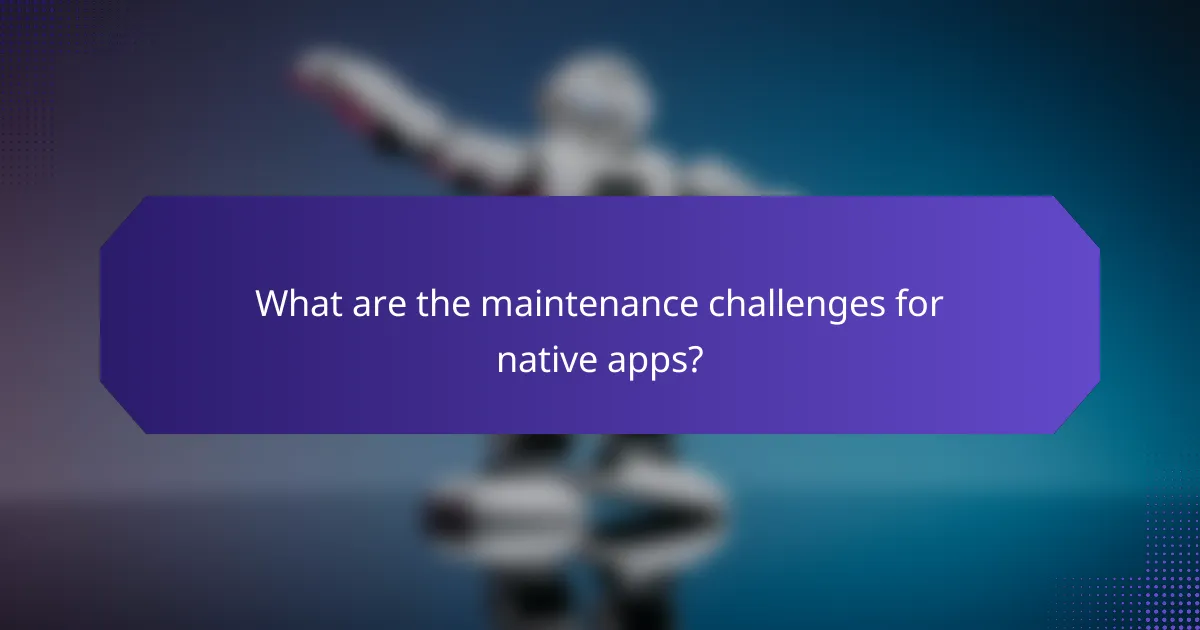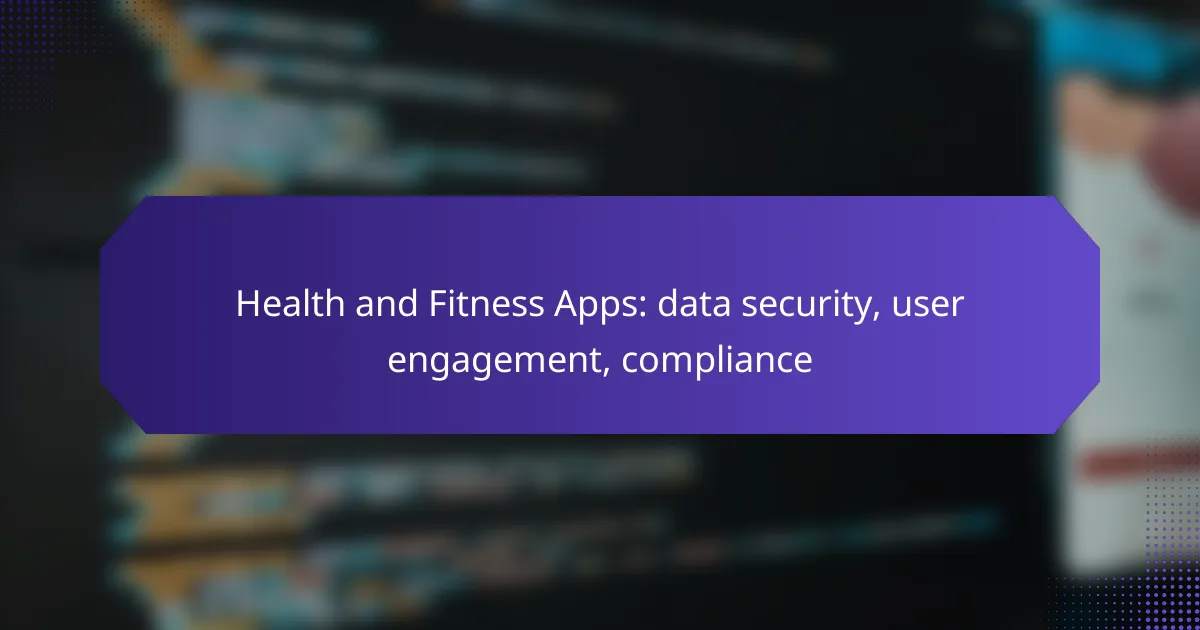Developing native apps can be a costly endeavor, often requiring substantial investment due to the need for separate codebases for different platforms. This platform dependency not only increases initial development costs but also complicates ongoing maintenance and updates, leading to further financial implications. As a result, businesses must carefully consider these factors when opting for native app development.

What are the costs of developing native apps in the UK?
Developing native apps in the UK can be quite expensive, with costs often ranging from tens of thousands to several hundred thousand pounds depending on complexity and features. Key factors influencing these costs include initial investment, ongoing maintenance, and platform-specific expenses.
High initial investment
The initial investment for native app development typically involves significant costs due to the need for specialized skills and technology. Hiring experienced developers, designers, and project managers can lead to initial expenses that start in the low tens of thousands of pounds for simpler applications and can escalate for more complex projects.
Additionally, costs can increase based on the need for extensive user research, prototyping, and quality assurance testing. It’s essential to budget adequately for these upfront costs to ensure a successful launch.
Ongoing maintenance expenses
Ongoing maintenance for native apps is a crucial aspect that can lead to substantial long-term costs. Regular updates, bug fixes, and compatibility adjustments with new operating system versions are necessary to keep the app functional and secure, which can amount to several thousand pounds annually.
Moreover, user feedback may necessitate feature enhancements or redesigns, further adding to maintenance costs. Businesses should plan for these recurring expenses to maintain user satisfaction and app performance.
Cost variations by platform
Costs can vary significantly between platforms, such as iOS and Android. Developing for iOS may require different design and development standards, often leading to higher initial costs due to the need for specialized knowledge of Apple’s ecosystem.
On the other hand, Android development may involve additional complexity due to the wide range of devices and screen sizes. Businesses should evaluate their target audience and platform preferences to determine the most cost-effective approach for their app development needs.

How does platform dependency affect native app development?
Platform dependency significantly impacts native app development by requiring separate codebases for each operating system, leading to higher costs and complexity. This dependency means that developers must tailor applications specifically for platforms like iOS and Android, which can complicate updates and maintenance.
Limited cross-platform compatibility
Native apps are designed to run on specific platforms, which limits their compatibility across different operating systems. This means that a native app built for iOS cannot be directly used on Android without significant modifications, resulting in increased development efforts and costs.
For businesses, this can lead to a fragmented user experience, as users on different platforms may not have access to the same features or updates simultaneously. Companies must weigh the benefits of a tailored experience against the drawbacks of limited reach.
Increased development time
The need for separate codebases for each platform leads to longer development cycles for native apps. Developers must write and maintain distinct versions of the app, which can double or even triple the time required to launch a product across multiple platforms.
Additionally, testing and quality assurance processes become more complex, as each version must be thoroughly vetted for its specific platform. This can delay updates and new feature rollouts, impacting overall user satisfaction and engagement.

What are the maintenance challenges for native apps?
Native apps face several maintenance challenges, primarily due to their reliance on specific platforms and the need for regular updates. These challenges can lead to increased costs and complexity in managing the app lifecycle.
Frequent updates required
Native apps often require frequent updates to stay compatible with the latest operating system versions and device features. This can involve significant time and resources, as developers must ensure that the app functions correctly across different versions of iOS or Android.
Regular updates are essential not only for compatibility but also for security and performance improvements. Neglecting updates can lead to vulnerabilities and a poor user experience, potentially resulting in lost users.
Device fragmentation issues
Device fragmentation is a major challenge for native app maintenance, as there are numerous devices with varying screen sizes, hardware capabilities, and operating system versions. This diversity can complicate testing and optimization efforts, making it harder to deliver a consistent user experience.
To manage device fragmentation, developers should prioritize testing on a representative sample of devices and consider using analytics to identify the most common devices among their user base. This targeted approach can help streamline maintenance efforts and ensure broader compatibility.

What are the benefits of native apps?
Native apps offer superior performance and seamless integration with device features, making them a preferred choice for many developers. Their ability to leverage platform-specific capabilities enhances user experience and functionality.
Enhanced performance
Native apps are optimized for specific operating systems, which allows them to run more efficiently than cross-platform alternatives. This optimization results in faster load times and smoother interactions, crucial for user retention.
Performance metrics such as responsiveness and frame rates are typically superior in native applications. For instance, animations and transitions can achieve low latency, often under 16 milliseconds, providing a fluid experience that users expect.
Access to device features
Native apps have direct access to a device’s hardware and software features, such as GPS, camera, and push notifications. This access enables developers to create rich, interactive experiences that utilize these capabilities effectively.
For example, a native app can use the camera for augmented reality features or GPS for location-based services, enhancing functionality beyond what web apps can offer. This direct integration often leads to more innovative applications tailored to user needs.

How to choose between native and hybrid apps?
Choosing between native and hybrid apps hinges on your project’s specific needs, including user experience, budget, and maintenance considerations. Native apps typically offer superior performance and user experience, while hybrid apps can be more cost-effective and easier to maintain.
Assessing user experience needs
When evaluating user experience needs, consider the app’s intended functionality and target audience. Native apps generally provide a smoother, faster experience, leveraging device-specific features like camera, GPS, and notifications. If your app requires high performance or complex interactions, native development may be the better choice.
On the other hand, if your app’s primary functions are straightforward and do not heavily rely on device capabilities, a hybrid app could suffice. Hybrid apps can still deliver a satisfactory user experience, especially for less demanding applications.
Evaluating budget constraints
Budget constraints are a critical factor in deciding between native and hybrid apps. Native app development often incurs higher costs due to the need for separate codebases for each platform, which can lead to expenses in the low tens of thousands of USD. This includes design, development, and testing phases.
In contrast, hybrid apps can be developed more economically, as a single codebase can be used across multiple platforms. This can significantly reduce both initial development costs and ongoing maintenance expenses. However, it’s essential to weigh these savings against potential compromises in performance and user experience.

What are the key factors influencing native app development?
Key factors influencing native app development include high development costs, platform dependency, and ongoing maintenance requirements. Understanding these elements is crucial for businesses considering native applications, as they directly impact budget, timeline, and resource allocation.
Target audience preferences
When developing a native app, it’s essential to consider the preferences of your target audience. Users often favor apps that provide a seamless experience, fast performance, and access to device-specific features. Tailoring your app to meet these expectations can significantly enhance user satisfaction and retention.
Conducting user research can help identify specific needs and preferences, such as preferred functionalities or design aesthetics. Engaging with your audience through surveys or beta testing can provide valuable insights that inform your development process.
Market trends in the UK
The UK market shows a strong inclination towards native apps, particularly in sectors like finance, e-commerce, and entertainment. Users in these industries often expect high-quality, responsive applications that leverage the full capabilities of their devices. This trend indicates a growing demand for apps that prioritize user experience and performance.
Additionally, the rise of mobile commerce in the UK suggests that businesses should invest in native applications to stay competitive. Companies must keep abreast of evolving market trends and user expectations to ensure their apps remain relevant and appealing.

What are the emerging trends in native app development?
Emerging trends in native app development focus on enhancing user experience and addressing critical issues like privacy and security. Developers are increasingly integrating advanced technologies such as AI and machine learning to create more responsive and personalized applications.
Integration of AI and machine learning
The integration of AI and machine learning in native app development allows for smarter applications that can learn from user behavior and preferences. This can lead to features like personalized recommendations, predictive text, and enhanced user interfaces that adapt to individual needs.
For example, apps in sectors like e-commerce and health are leveraging machine learning algorithms to analyze user data and improve service delivery. This trend not only enhances user engagement but also increases retention rates, making it a crucial consideration for developers.
Focus on user privacy and security
As concerns about data privacy grow, native app developers are prioritizing user privacy and security in their applications. This includes implementing robust encryption methods, transparent data usage policies, and adhering to regulations such as GDPR in Europe or CCPA in California.
Developers should ensure that users are informed about how their data is collected and used, providing options for data control. Regular security audits and updates are essential to protect against vulnerabilities and maintain user trust.










